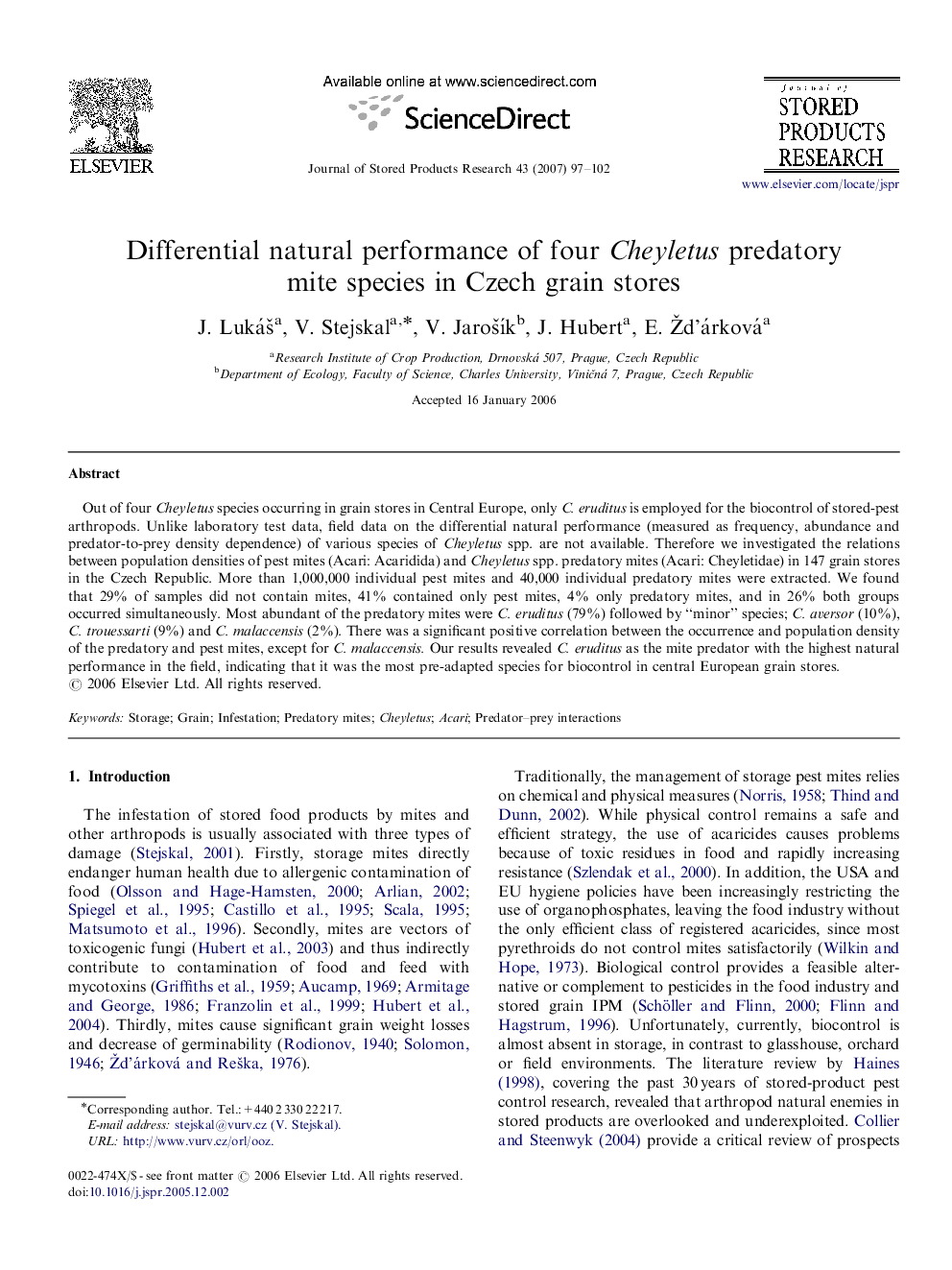| Article ID | Journal | Published Year | Pages | File Type |
|---|---|---|---|---|
| 4517563 | Journal of Stored Products Research | 2007 | 6 Pages |
Out of four Cheyletus species occurring in grain stores in Central Europe, only C. eruditus is employed for the biocontrol of stored-pest arthropods. Unlike laboratory test data, field data on the differential natural performance (measured as frequency, abundance and predator-to-prey density dependence) of various species of Cheyletus spp. are not available. Therefore we investigated the relations between population densities of pest mites (Acari: Acaridida) and Cheyletus spp. predatory mites (Acari: Cheyletidae) in 147 grain stores in the Czech Republic. More than 1,000,000 individual pest mites and 40,000 individual predatory mites were extracted. We found that 29% of samples did not contain mites, 41% contained only pest mites, 4% only predatory mites, and in 26% both groups occurred simultaneously. Most abundant of the predatory mites were C. eruditus (79%) followed by “minor” species; C. aversor (10%), C. trouessarti (9%) and C. malaccensis (2%). There was a significant positive correlation between the occurrence and population density of the predatory and pest mites, except for C. malaccensis. Our results revealed C. eruditus as the mite predator with the highest natural performance in the field, indicating that it was the most pre-adapted species for biocontrol in central European grain stores.
